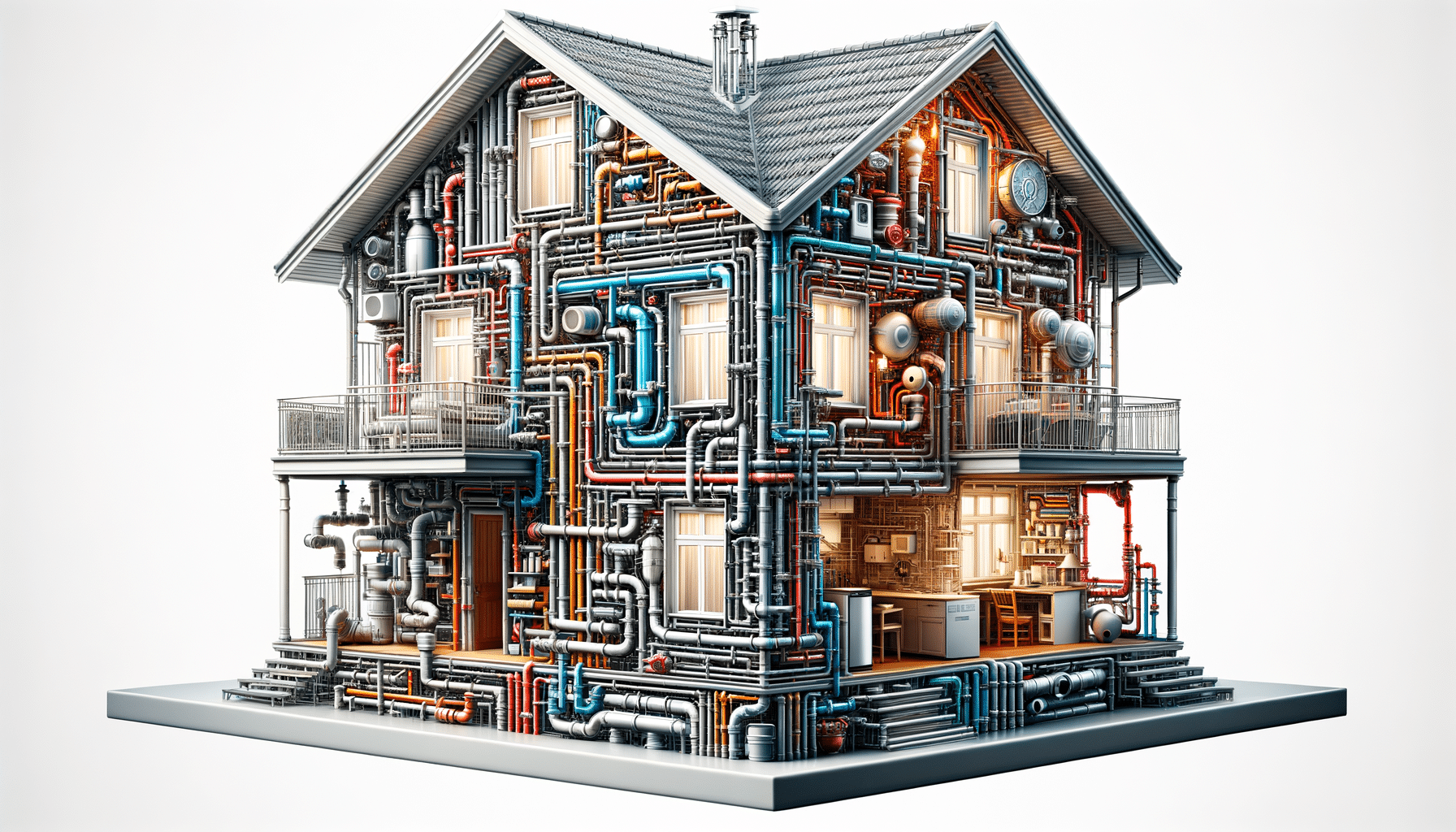
Understanding Piping in Homes: A Comprehensive Guide
Introduction to Home Piping Systems
Piping is an integral component of any home, responsible for transporting water, gas, and waste to and from various parts of the house. Understanding the different types of pipes and their applications is essential for homeowners and anyone involved in home maintenance or renovation. This guide aims to provide an in-depth look at the various aspects of home piping systems, ensuring your home remains safe and efficient.
Home piping systems are vital for maintaining the flow of water and gas, ensuring that your household functions smoothly. From providing clean water for drinking and cooking to removing waste efficiently, piping systems are the unseen heroes of modern living. This article will explore the materials used, installation methods, and maintenance practices to help you make informed decisions about your home’s plumbing needs.
Types of Pipes Used in Homes
When it comes to home piping, the choice of material can significantly impact the system’s longevity and performance. Several types of pipes are commonly used in residential settings, each with its advantages and disadvantages.
Copper Pipes: Known for their durability and resistance to corrosion, copper pipes have been a staple in plumbing for many years. They are ideal for both hot and cold water supply lines. However, they can be more expensive than other options.
PEX Pipes: Cross-linked polyethylene (PEX) pipes are flexible, easy to install, and resistant to scale and chlorine. They are increasingly popular due to their versatility and cost-effectiveness, especially in new installations.
PVC Pipes: Polyvinyl chloride (PVC) pipes are commonly used for drainage and waste systems. They are lightweight, easy to work with, and resistant to corrosion. However, they are not suitable for hot water applications.
Galvanized Steel Pipes: Once a common choice for water supply lines, galvanized steel pipes are now less favored due to their tendency to rust and corrode over time.
Choosing the right type of pipe depends on the specific needs of your home, including water pressure, temperature, and budget considerations.
Installation and Maintenance of Piping Systems
Proper installation and maintenance of piping systems are crucial for preventing leaks, ensuring efficient flow, and extending the lifespan of the pipes. Whether you’re installing a new system or maintaining an existing one, following best practices can save time and money in the long run.
During installation, it’s important to ensure that pipes are correctly aligned and securely fastened. This prevents movement that could lead to leaks or breaks. Additionally, using the appropriate fittings and joints for the type of pipe is essential to maintain a secure connection.
Maintenance involves regular inspections for signs of wear and tear, such as leaks, rust, or unusual noises. It’s advisable to have a professional plumber conduct a thorough check at least once a year. Simple tasks like insulating pipes in colder climates can prevent freezing and bursting, which can cause significant damage.
- Regularly check for leaks and repair them promptly.
- Insulate exposed pipes to prevent freezing.
- Flush out water heaters to remove sediment build-up.
By staying proactive with maintenance, homeowners can avoid costly repairs and ensure their piping systems function efficiently.
Common Issues and Solutions in Home Piping
Even with the best materials and installation practices, piping systems can encounter issues over time. Being aware of common problems and their solutions can help homeowners address them promptly.
Leaks: Leaks are one of the most common issues and can occur due to corrosion, high water pressure, or faulty connections. Regular inspections and prompt repairs are essential to prevent water damage.
Clogs: Clogged pipes can result from the accumulation of debris, grease, or foreign objects. Using drain screens and avoiding the disposal of unsuitable materials can mitigate this issue.
Low Water Pressure: This can be caused by leaks, blockages, or problems with the water supply. Identifying the source of the problem is key to finding a solution, which may involve cleaning out pipes or adjusting pressure settings.
Noise: Unusual noises such as banging or whistling can indicate issues like water hammer or air in the pipes. Installing water hammer arrestors or bleeding the system can resolve these problems.
Addressing these issues promptly not only ensures the smooth operation of the piping system but also prevents further damage and costly repairs.
Future Trends in Home Piping
As technology advances, so do the materials and methods used in home piping systems. Keeping an eye on future trends can help homeowners make informed decisions when upgrading or installing new systems.
Sustainable Materials: There is a growing trend towards using environmentally friendly materials in plumbing. This includes pipes made from recycled materials or those designed to reduce water wastage.
Smart Plumbing Systems: The integration of smart technology in plumbing systems allows for real-time monitoring of water usage, leak detection, and even automatic shut-off in case of emergencies.
Improved Insulation: Advances in insulation materials are helping to reduce energy consumption by maintaining the temperature of water as it travels through pipes.
These innovations not only enhance the efficiency and safety of home piping systems but also contribute to sustainability efforts, making them a worthwhile consideration for any homeowner looking to the future.


